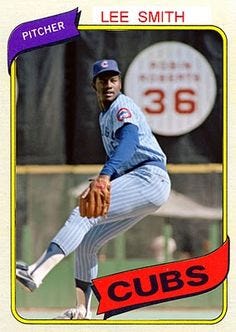Ballot 18: Lee Smith

Lee Smith
Played 18 years for eight teams
Seven-time all-star led the league in saves four times. 29.4 WAR, 13.8 WAA
Pro argument: Great reliever who for 13 years held the all-time saves record.
Con argument: Closers are specialists who pitch a fraction of innings that starters do.
Deserves to be in Hall?: Depends on your thought on relievers.
Will get electe…


